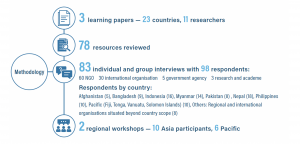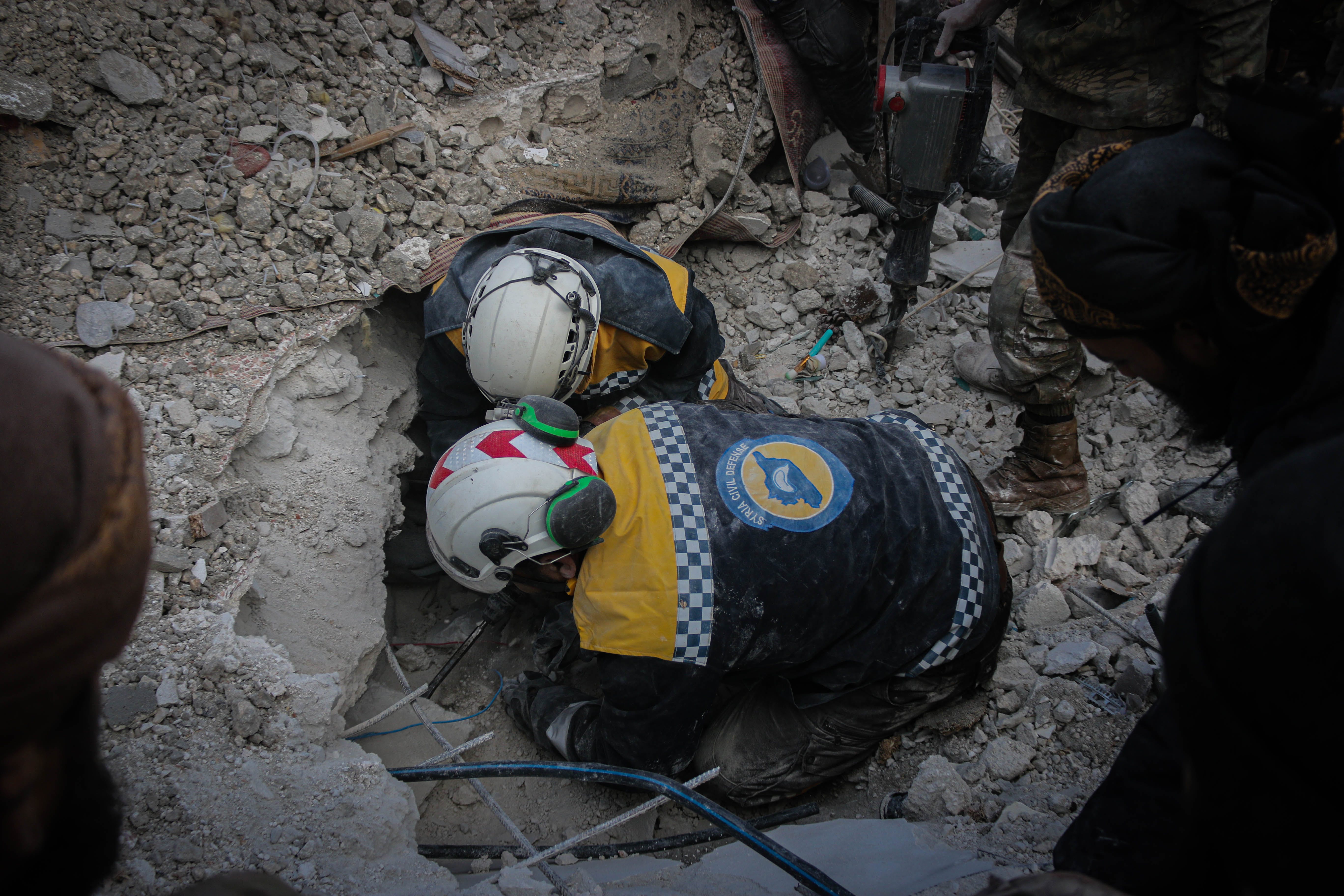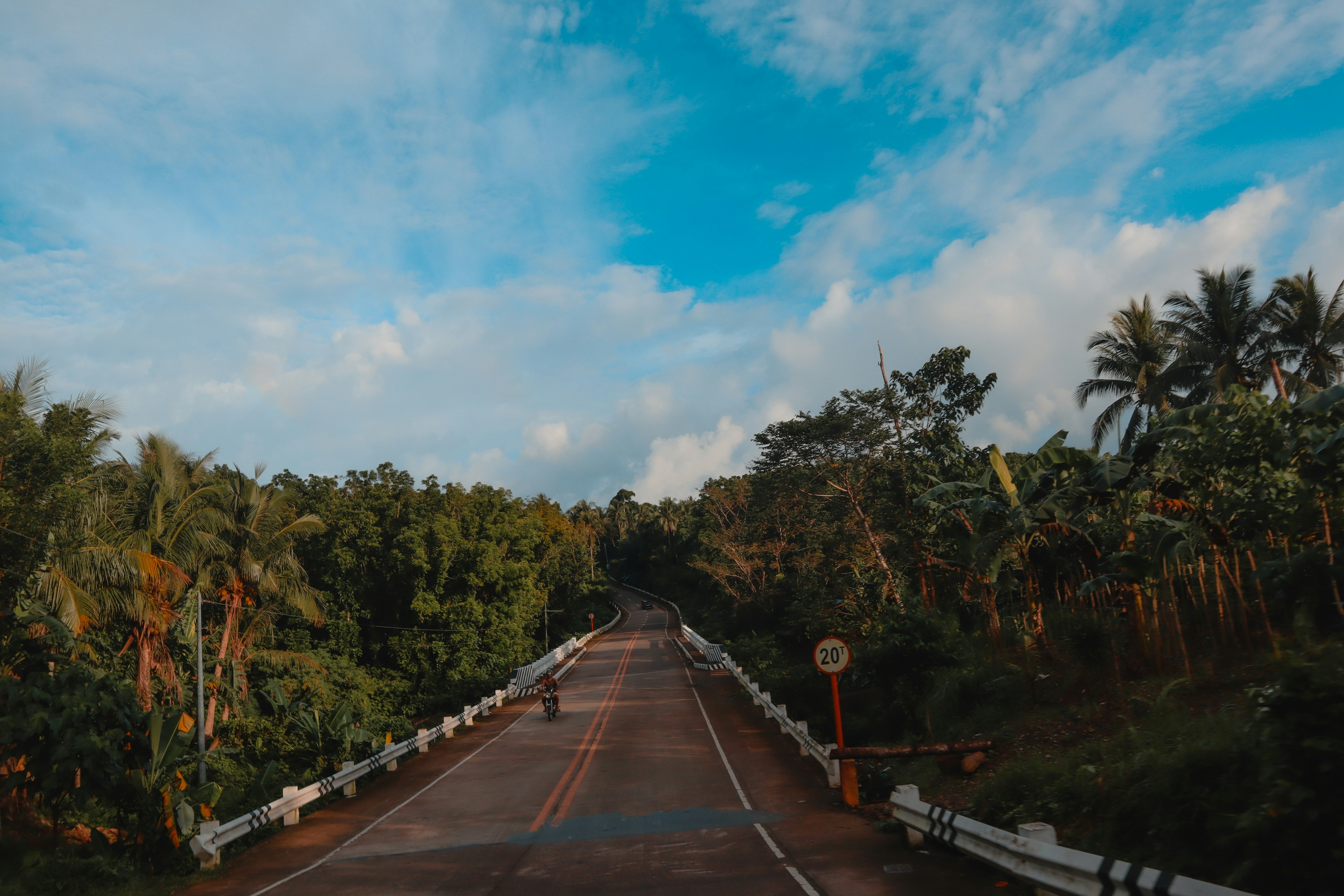Today the Humanitarian Horizons program’s People, Power and Local Leadership research team are releasing a series of learning briefs on approaches to localisation. This blog outlines the thinking behind learning briefs and how they can be used.
Why are learning briefs needed?
By now, the localisation bibliography is – to put it mildly – long. However, it is also uneven. There is plenty about intentions, quite a lot about experiences, and much less about impacts or achievements.
While there have been initial conversations about monitoring and evaluating localisation initiatives, as yet there is limited information available about what is working and why. Individual evaluations are often organisation and context-specific and often focus on evaluating the process of localisation, rather than the impact. The dispersed nature of the materials can make insights difficult to access and use when time is limited.
As a result, there is limited consolidated knowledge about which practices are effective and the associated benefits and weaknesses. Efforts in this regard are hampered by the fact that many localisation initiatives tend to be one-off, pilot practices that are not replicated or integrated into programming at scale. Practices can also be perceived as tokenistic, ad hoc or not contributing to a broader approach. Importantly, many accounts of current localisation practices are heavily reliant on the perspective of international actors.
What do the learning briefs highlight?
The evidence base is growing all the time. But we don’t need to wait. Current practices offer a resource that can directly inform future work by organisations or actors working in similar circumstances, if they are captured and shared in usable ways.
‘I’ve seen initiatives that are good starting point for deepening localisation or attaining localized approaches, but they are bits and pieces. I haven’t seen anything that puts together all these elements that are necessary for good localisation.’ – international organization representative
From a practitioner perspective, most guidance to date has focused on ‘best practice’ localisation. Ambition and quality are of course both important. But is there a risk of the perfect becoming the enemy of the good?
Focusing on best practice can avoid acknowledging that not all organisations are at the same point in the localisation journey or indeed on the same paths – that they may not yet have the resources, know-how, or (let’s admit it) appetite necessary to reach the ‘ideal’ approaches. In a sector that notoriously falls short on its accountability and participation commitments, keeping the conversation on the level of ‘best practice’ can help to paper over some of these realities while also increasing the risk that opportunities get overlooked.
In this spirit, the learning briefs aim to help decision makers at different levels by exploring the benefits and trade-offs that come with different approaches to localisation. What actions can you do now in the absence of an organisational strategy? Do you need to factor in the ‘megaphone effect’ when identifying priorities on localisation with diverse actors part of a network? Apart from capacity strengthening, what other opportunities are there to meaningfully achieve transition in a transformative partnership?
In this way, we hope the learning briefs can support the process of more intentional localisation design.
What do they look like?
The series has three learning briefs (links will be added as they are published):
- Localisation at Project Level – These are group of practices which are usually embedded within the cycle of a project or program, are relatively immediate, and are time and output bound.
- Localisation through Transformative Partnerships – These are practices within partnerships that enable decision-making, capacity sharing and other practices that support local and national actors’ visions and priorities.
- Localisation through Networks and Collectives – These are practices within and led by networks and collectives – groups of humanitarian organisations working together in a larger, overarching relationship.
The papers are based on qualitative research to identify initiatives and gather perspectives on their strengths, weaknesses, and contextual considerations. Eleven researchers worked across 23 countries and contributed to the process (see below for contributors).

Each paper includes the following:
- A snapshot of current practice from Asia and the Pacific. These examples, while not an exhaustive mapping, indicate a range of approaches including how they engage different domains of localisation such as funding, capacity, and advocacy.
- Potential benefits and trade-offs that need to be considered in implementation. This is intended to provide insights into what approaches are most likely to work at scale or be transferable from one context to another.
- A basic model to help decision-makers identify points where they might introduce changes inspired by what they have seen in these papers or elsewhere. These include a simple guide to the program cycle, a staged roadmap for partnerships, and a model for thinking about the evolution of collaborative networks.
The learning briefs are not intended to be prescriptive, but to provide a practical guide for humanitarian actors to better plan practices to support localisation. As ever, specific approaches or programmes will need to be identified based on an assessment of what is relevant, local priorities, risks and opportunities.
If you can offer other examples or would like to know more about the research, collaborate, partner or simply stay up to date, please contact HAG at info@humanitarianadvisorygroup.org.
About the research
Humanitarian Horizons 2021-2024 is supported by the Australian Government through the Department of Foreign Affairs and Trade.
The research team for this project was: Iris Low, Leaine Robinson (CoLAB); Muhammad Tanveer Amjad, Saeed Ullah Khan, Aaftab Ullah, Zaki Ullah (GLOW Consultants); Suman Ahsanul Islam, Nahid A Siddiqui, Niger Rahman (inSights); Seini Bukalidi (Pacific Island Association of NGOs), Anggoro Budi Prasetyo, Putu Hendra Wijaya, Dimas Panji Agung Rohmatulloh (Pujiono Centre); Thura Tun (Myanmar consultant); Prem Singh Nayak (Nepal consultant); Ninoy Balgos (Philippines consultant); and Madeline Baker, Pamela Combinido, Pip Henty, Idha Kurniasih, Kate Sutton, Eranda Wijewickrama (Humanitarian Advisory Group).
Editor: Eleanor Davey
(Photo: Rachael Arnott on Shutterstock)






